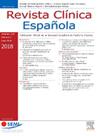RICA-2 登记:首批 1,000 名患者的设计和基线特征
IF 2.3
4区 医学
Q2 MEDICINE, GENERAL & INTERNAL
引用次数: 0
摘要
背景和目的心力衰竭(HF)是一种流行性综合征,也是入院治疗的主要原因之一。患者登记提供了真实世界的临床实践信息,是临床试验的补充。RICA-2 是西班牙内科医学会的一个登记处。其主要目的是了解在内科接受治疗的高血压患者的临床和流行病学特征以及预后因素。本研究旨在介绍 RICA-2 的设计、首批纳入的 1000 名患者的基线特征及其与 RICA 登记历史队列的比较。方法对符合以下纳入标准的心房颤动患者进行观察性、多中心和前瞻性研究:年龄等于或大于18岁,根据欧洲指南诊断为心房颤动,未明确纳入失代偿期或稳定期,新发心房颤动或慢性心房颤动患者,无论左心室射血分数、病因和合并症如何。合并症负担高于 RICA 登记(夏尔森合并症指数为 5 分),以慢性失代偿性心房颤动(74%)、高血压病因(39%)和射血分数保留(52%)为主。结论:RICA-2 代表了一个当代患者群组,将为我们提供内科治疗的急慢性心房颤动患者的临床、流行病学和预后信息。本文章由计算机程序翻译,如有差异,请以英文原文为准。
El registro RICA-2: diseño y características basales de los primeros 1.000 pacientes
Background and objective
Heart failure (HF) is a syndrome of epidemic proportions and one of the main reasons for hospital admission. Patient registries provide real-world clinical practice information which is complementary to clinical trials. RICA-2 is a registry of the Spanish Society of Internal Medicine. Its main goal is to know the clinical and epidemiological characteristics and prognostic factors of patients with HF treated in Internal Medicine Departments. The objective of this study is to present the design of the RICA-2, the baseline characteristics of the first 1000 patients included and their comparison with those of the historical cohort of the RICA registry.
Methods
Observational, multicentre and prospective study of patients with HF with the following inclusion criteria: age equal to or greater than 18 years old, diagnosis of HF according to the European Guidelines, indistinct inclusion in decompensation or stable phase, of patients with de novo HF or chronic HF, regardless of left ventricular ejection fraction, aetiology and comorbidities.
Results
RICA-2 patients have advanced age (83 years old) and 51% are women. The comorbidity burden is higher than in the RICA registry (5 points in the Charlson comorbidity index), with predominating chronic decompensated HF (74%), hypertensive aetiology (39%) and preserved ejection fraction (52%). Most patients are pre-frail or vulnerable and are at risk of malnutrition.
Conclusion
The RICA-2 represents a contemporary cohort of patients that will provide us with clinical, epidemiological and prognostic information on patients with acute and chronic HF treated in Internal Medicine.
求助全文
通过发布文献求助,成功后即可免费获取论文全文。
去求助
来源期刊

Revista clinica espanola
医学-医学:内科
CiteScore
4.40
自引率
6.90%
发文量
73
审稿时长
28 days
期刊介绍:
Revista Clínica Española published its first issue in 1940 and is the body of expression of the Spanish Society of Internal Medicine (SEMI).
The journal fully endorses the goals of updating knowledge and facilitating the acquisition of key developments in internal medicine applied to clinical practice. Revista Clínica Española is subject to a thorough double blind review of the received articles written in Spanish or English. Nine issues are published each year, including mostly originals, reviews and consensus documents.
 求助内容:
求助内容: 应助结果提醒方式:
应助结果提醒方式:


